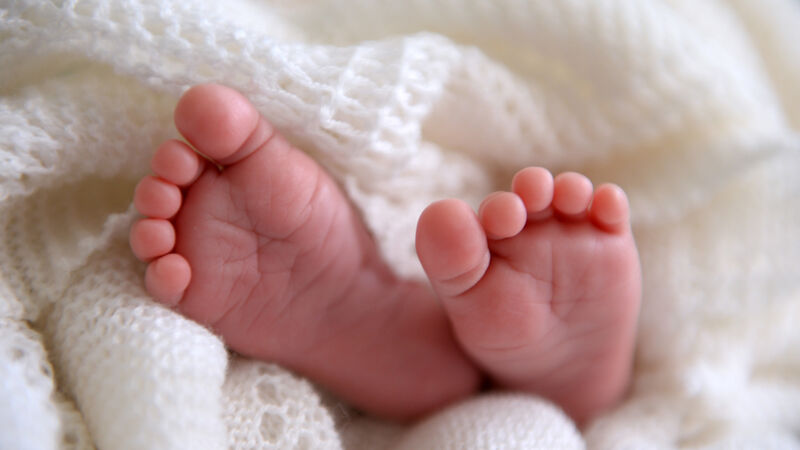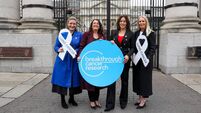Illegal birth registrations: Reynolds Review only repeated what we already knew

In all of these thousands of “incomplete files”, where an adoption process was commenced but never completed, do we know what happened to the child? File photo
The Reynolds Review into illegal birth registrations didn’t tell us anything we didn’t already know. And know for quite a long time. It was a review to see if we need another review.
Its entire raison d’etre was to delay and buy time. It was supposed to be completed by October 2018. It submitted its report in May 2019. It wasn’t published until this week.
Of course, this is not the fault of those leading the review. They were limited by terms of reference that were extremely narrow. The report itself acknowledges that its findings would cause some disappointment and “leave many questions unanswered”.
Firstly, it is important to note that the Reynolds Review was not, nor was it ever intended to be, a review into illegal adoptions. It was a review of a small sample of around 1,500 records to examine them for 24 labels or "markers" which might indicate an illegal birth registration has occurred. The State does not see these cases as illegal adoptions, as no adoption order exists.
As a result, a point that has been lost in much of the coverage is that not a single completed adoption file was examined as part of the Reynolds Review. Not one. The review was “limited to files relating to adoption processes which commenced but were not completed and where thus, no adoption order was made”.
It only looked at “incomplete files”. This raises important questions, quite apart from the potential illegal registration of births.
In all of these thousands of “incomplete files”, where an adoption process was commenced but never completed, do we know what happened to the child? Why was the adoption process not completed? Is there any information or knowledge as to their subsequent fate?
These issues need to be addressed as a matter of urgency.
Similarly further investigations are needed into files labeled by the Adoption Authority of Ireland (AAI) as “red”, meaning that “the file does not appear to comply with adoption law”. The AAI stated that the files in this category “involved cases which, by definition, did not result in adoption, and would not necessarily have been subject to adoption law”.
What does this mean? Is it known what happened to the children in these files? Again, these matters need to be clarified as a matter of urgency.
It is crucial that illegal birth registrations are not conflated with illegal adoptions. Not all illegal adoptions involve illegal birth registrations.
Adoption campaigners repeatedly argued that the review would be largely cosmetic in nature if it were to be confined to searching for markers rather than a forensic examination of records for all forms of illegal adoption.
Crucially, the review had no remit to examine any other forms of illegal adoption including cases of falsified or questionable consents, where the mother consenting was a minor; adoptions granted in the absence of birth certificates of any kind; and in the case of children whose parents were married and instances of correct birth registrations which resulted in illegal adoptions.
Indeed, the report itself notes that wider concerns like, the trafficking of Irish children; forced or illegal adoptions; the absence of informed consent; or potentially profiteering from the alleged sale of infants were outside the scope of its terms of reference but are matters “which the State will wish to address”.
It’s crucial that it does because, as is clear to anyone involved in the issue, illegal birth registrations are just one cog in a very large system. And despite talk of “shock” and “dark chapters” brought on by recent media coverage, a succession of Governments has been aware of this issue going back decades.
This newspaper highlighted the case of Tressa Reeves in 2010. She had documented evidence that her son was the victim of an illegal birth registration since 1997. The former Adoption Board was made aware of her case in 2001. In the years that followed, three separate children’s ministers were informed of Ms Reeves’ case.
Read More
The Department of Children acknowledged in 2018 that the State has a responsibility to tell those victims of illegal registrations the truth about their identity. Yet, Tressa spent more than a decade asking for the State to do just that, to no avail. It wasn’t until 2012, and the threat of increased negative publicity, that her son was told the truth of his birth.
Following the Reeves case, the AAI committed to an audit of its records. It found approximately 99 illegal registration cases, while a further 20 were identified in the following years. Not all of these cases referred to St Patrick’s Guild.
In a report prepared for the DCYA in June 2011, the AAI said it considered carrying out a more comprehensive audit of the cases it uncovered, but because of the transfer of senior personnel and the “pressure on resources of the imminent establishment of the Adoption Authority no further action was taken”.
In June 2013, a delegation from the AAI told the Department of Children and Youth Affairs (DCYA) of “at least 120 [confirmed] cases” of illegal registrations found as the result of the 2010 audit.
An Adoption Authority of Ireland delegation told representatives of the DCYA and the GRO in June 2013 that the St Patrick's Guild was aware of "several hundred cases of illegal birth registrations". Yet here we are seven years later surprised...bizarre.https://t.co/AuUP9s6SPg
— Conall Ó Fátharta (@ococonuts) March 9, 2021
The delegation went to so far as to specifically highlight St Patrick’s Guild, stating that the adoption society was “aware of several hundred illegal registrations”, and that it was “not seeking the people involved” but were, rather, “waiting for people to contact them”. The delegation also stated its belief that there “may be thousands” of illegal birth registration cases.
Two years later, in 2015, the AAI sent three reports – including a spreadsheet of 90 specific cases it believed were likely illegal registrations – to the DCYA. Again, no action was taken.
Much of the reporting on the Reynolds Review cited its apparent recommendation that no further inquiry into the matter is warranted. That’s not entirely accurate.
The review concludes that a wider review of records would be unlikely to provide “clear information relating to the existence of markers or wording suggestive of markers and the degree to which they may potentially be linked to incorrect birth registrations”. However, as noted above, it clearly states that the issues of illegal adoption, trafficking, consent, the absence of informed consent and potential profiteering from the sale of children are issues the State will wish to address.
Indeed, the revealed in 2018 that Tusla had identified a further 748 cases of concern in the records of St Patrick’s Guild – outside of illegal birth registrations. These cases contain evidence of names being changed, payments being made to the agency, and placements of children with no corresponding adoption order. Reference is also made to “other matters that indicate irregularities”.

This is an issue that goes far beyond illegal birth registrations and can no longer be kicked down the road. The public reaction to the Mother and Baby Homes report should be instructive to the Government.
It can no longer utilise the Commission of Investigation model in its current format. Any inquiry needs to be human rights focused and involve the victims of such practices as partners not adversaries.
People also need to have access to their own records before engaging with any investigative process Special Rapporteur on Child Protection Conor O’Mahony has been tasked with plotting a way forward. He was refreshingly forthright in his opinion that “its not really acceptable to let things lie at this point” and that there is “an onus on the State to investigate this properly and fully and to try and establish as far as reasonably possible the true scale of the issue”.
It's time the State lived up to this responsibility.
Read More













